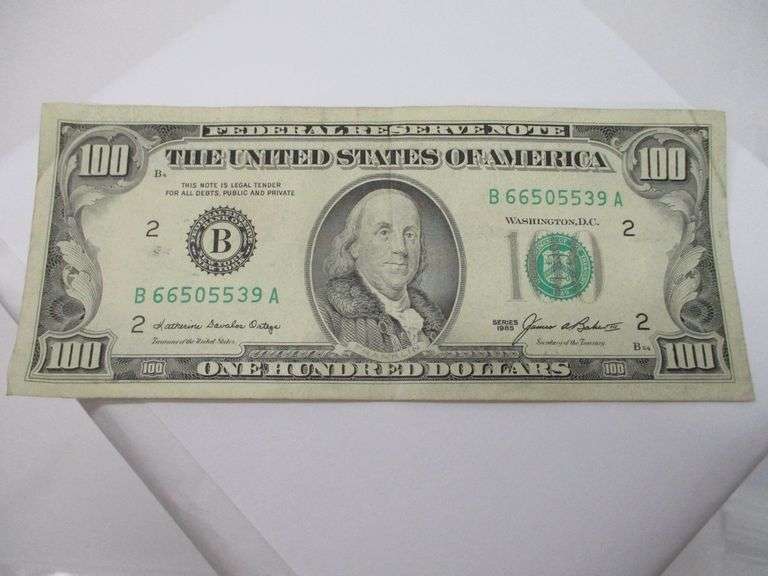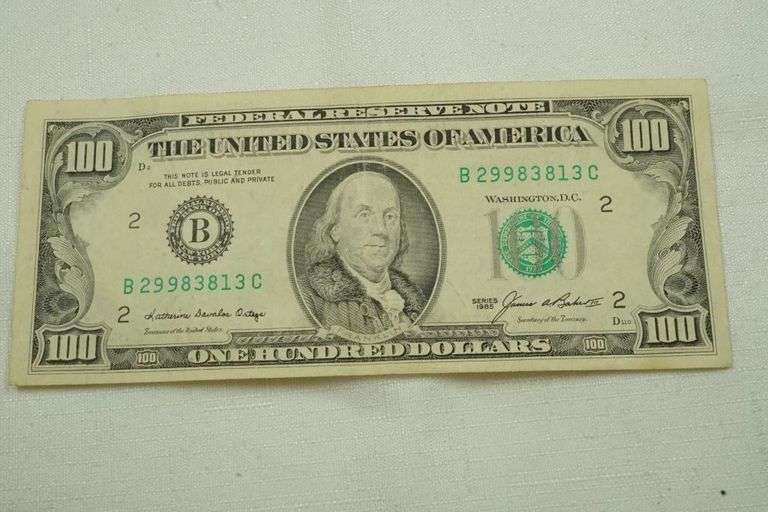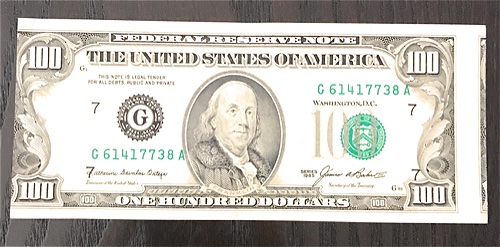When it comes to U.S. paper money, many people wonder about the value of older bills, including the 1985 series $100 bill. The 1985 100 dollar bill is a significant piece of American currency, and for collectors and enthusiasts, understanding its value is essential. Whether you’re looking to sell or simply curious about its worth, it’s crucial to grasp the factors that affect the price of this particular bill.
In this article, we will discuss the value of the 1985 100 dollar bill, including key aspects like its condition, unique features, and rare versions that may command higher prices.
Let’s dive in to explore everything you need to know about the 1985 100 dollar bill value.
Understanding The 1985 100 Dollar Bill
The 1985 series $100 bill, part of the U.S. Federal Reserve Note series, holds historical significance. These notes were printed by the U.S. Treasury Department and are still legal tender today, though they may no longer be in circulation.

Most 1985 $100 bills aren’t particularly valuable in their basic form, but there are exceptions, such as star notes, which are far rarer and can command a premium price.
Key Specifications of the 1985 $100 Bill
- Denomination: $100.00 USD
- Type: Federal Reserve Note
- Signature Varieties: Ortega and Baker
- Series: 1985
Despite being over three decades old, many of these bills are not worth more than their face value of $100. However, their worth can increase depending on their condition, rarity, and any unique features they may possess, such as being a star note or having printing errors.
What Determines The Value Of A 1985 $100 Bill?
The value of a 1985 $100 bill is heavily influenced by its condition. In general, a standard 1985 one hundred dollar bill that has been in circulation for a while will only be worth its face value—$100.
However, if the bill is in uncirculated condition, its value increases.
An uncirculated bill shows no signs of wear, and these notes can often be worth between $150 and $175 if they are graded as MS 63 (choice uncirculated).
Star Notes: A Rare and Valuable Find
One of the most notable features that can increase the value of a 1985 $100 bill is the presence of a star note. Star notes are replacement bills printed by the Federal Reserve to replace damaged notes during the printing process. These notes are often rarer, and as a result, they can command a significantly higher price in the market.
A star note can be easily identified by the star symbol that appears at the end of the serial number.
In extremely fine condition, a star note from the 1985 series $100 bill is typically worth around $200. If the bill is uncirculated and graded as MS 63, its value can increase to approximately $425.
The Federal Reserve Bank that issued the star note also plays a role in determining its worth.
For example, star notes issued from the Federal Reserve Bank of New York tend to be more valuable. These notes can fetch around $300 in extremely fine condition, with uncirculated examples reaching values as high as $800 for an MS 63 grade.
How To Grade A 1985 $100 Bill?
Grading is an essential part of determining the value of a 1985 $100 bill. The grading process helps to assess the condition of the note and assign it a value based on its wear and appearance.

The following are common terms used in the grading system:
- Extremely Fine (EF): A note that shows minimal signs of wear. It may have a few minor creases but retains its bright appearance, and there are no major tears, stains, or discolorations.
- MS 63 (Choice Uncirculated): A note that is in pristine condition, showing no signs of circulation. It will retain its original crispness and be well-centered, without any folds or creases. These bills are generally in perfect condition and can fetch a higher price.
It’s important to note that a bill’s condition is one of the most important factors in determining its value. Bills that are worn or have visible damage will be worth less than those in excellent condition.
1985 $100 Bill Errors: Valuable or Not?
Like any other currency, the 1985 $100 bill may have been subject to printing errors during production. Errors in currency printing, such as misprints, off-center printing, or double impressions, can make certain notes more valuable. However, such errors are relatively rare, and only those with significant errors are worth pursuing for collectors.
If you come across a 1985 $100 bill with an error, it’s worth having it professionally appraised.
Depending on the type of error, such bills can sell for more than their standard market value. However, minor misprints or imperfections might not add much value to the bill.
The Security Features Of The 1985 $100 Bill
Unlike modern bills, the 1985 series $100 bill lacks some of the advanced security features seen in today’s notes. For instance, the 1985 series $100 bill does not contain a watermark or security thread, which were added to bills starting with the 1990 series. While this doesn’t affect the authenticity of the bill, it does make it less secure compared to newer versions of the $100 bill.
Despite this, the 1985 $100 bill is still valid for transactions as long as it is not counterfeit.
Counterfeit detection methods, such as looking for watermarks or security threads, are not applicable to this particular series, so alternative methods such as checking the bill’s serial number and comparing it to known genuine bills should be used.
Can You Still Use a 1985 $100 Bill for Transactions?
Yes, the 1985 $100 bill is still legal tender, and you can use it for transactions just like any other U.S. dollar bill. The bill was not demonetized, so as long as the note is not counterfeit, it is still valid and can be spent.
However, due to the age of the bill and its lack of advanced security features, it’s important to ensure that the note is in good condition and does not exhibit signs of being counterfeit.
How Much is a 1985 $100 Bill Worth Today?
So, how much is a 1985 $100 bill worth today? It depends on the condition and features of the bill. Most bills in circulated condition are worth their face value—$100. Uncirculated notes with high grades can range from $150 to $175, while star notes or bills from specific Federal Reserve Banks may command even higher prices, with some reaching up to $800 or more in pristine condition.
When it comes to selling or buying a 1985 $100 bill, it’s important to have a good understanding of its condition, rarity, and whether it contains any unique features, such as errors or star notes.
Collectors are willing to pay a premium for well-preserved, rare notes, so it’s worth the effort to ensure the bill is in good condition.
Conclusion
The 1985 100 dollar bill value can vary depending on a number of factors, including its condition, rarity, and any unique features such as star notes or errors. Most 1985 series $100 bills in circulated condition are worth their face value, but those in uncirculated condition or with rare features like star notes can fetch significantly higher prices.
If you come across a 1985 $100 bill, it’s important to evaluate its condition and any potential unique attributes it may have.
If you are wondering how much your 1985 100 dollar bill is worth, be sure to consult a professional for a proper valuation.

